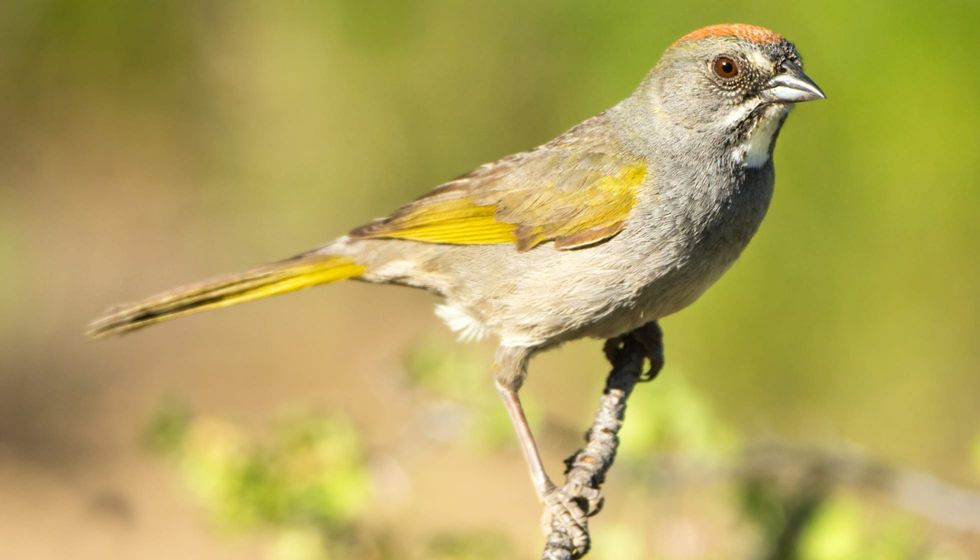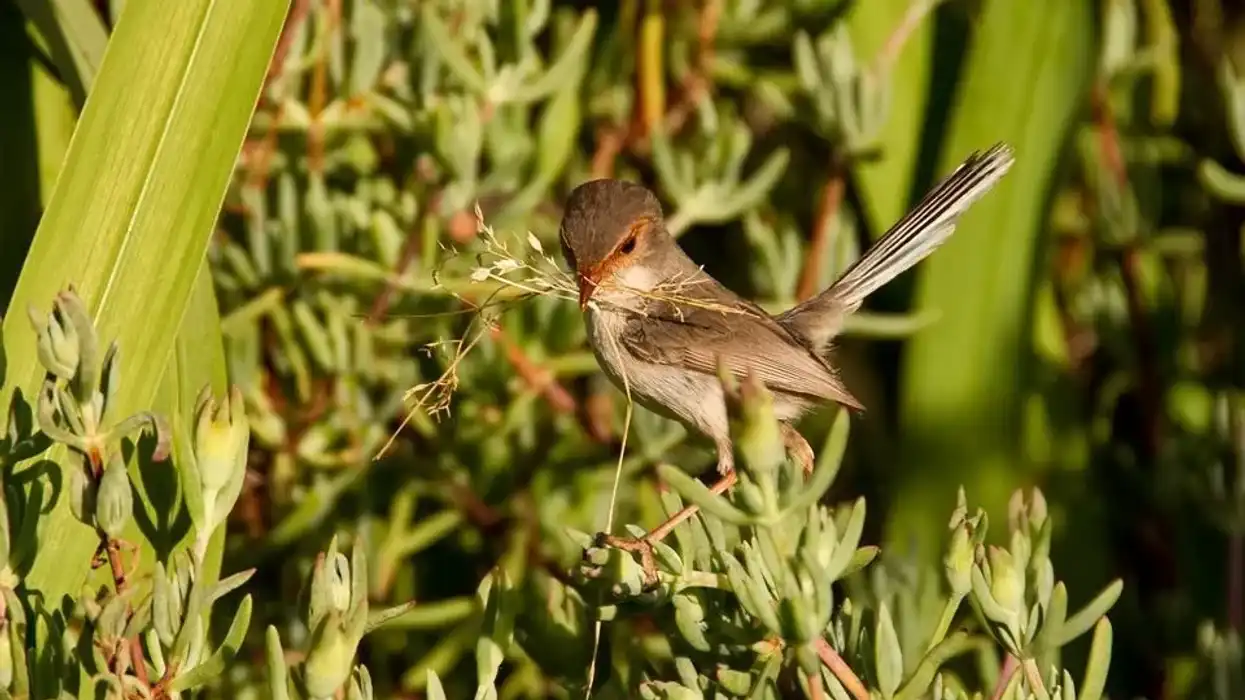The Green tailed towhee (Pipilo) is a kind of large sparrow that belongs to the order Passeriformes family of birds. They remain one of the least well-known birds of North America despite being fairly common on their range map.
The green tailed towhees are fairly common and widespread but hard to recognize since they live in bushes and are small in size. During summer, it is fairly common in the western mountains and spends most of its time foraging on the ground for seeds or fruits.
The male defends its nesting territory by singing from a raised perch. Scientists have claimed that climate change has contributed to adverse effects on the population and well-being of these small birds.
These birds have also been observed in crowded urban traffic, and they are mostly found in North America, Texas, which is why some of its species are known as North American birds. The green tailed towhee (Pipilo chlorurus) is the smallest towhee and the only true migratory towhee.
Their scientific name roughly translates to 'colorful chirper', while it got its common name from its bright yellow-greenish tail. These birds perch on trees and bushes and call each other by making different sounds.
Read on for our bird guide of the green tailed towhee. If the Aves or bird species are of your interest, you should also check up on Muscovy duck and duck birds species too.
Green Tailed Towhee Interesting Facts
What type of animal is a Green Tailed Towhee?
The green tailed towhee (Pipilo) is a type of sparrow bird species.
What class of animal does a Green Tailed Towhee belong to?
The green tailed towhee (Pipilo chlorurus) belongs to the Aves class, which is the bird class of animals.
How many Green Tailed Towhees are there in the world?
The total population of this bird species is unknown. Their presence has been scattered across the world, particularly in the United States and bushlands.
Where does a Green Tailed Towhee live?
The green tailed towhees mostly prefer to live in grasslands, savanna, among the low shrubs such as sagebrush and are mostly found on mountains, Texas, and North America in general.
They nest on large, deep cup nests made with twigs, weeds, grass, shrub, strips of bark, on low grounds among the bushes, and sometimes among the dry grasses for their habitats.
They are secretive birds, which are often hard to spot or see.
What is a Green Tailed Towhee habitat?
The Pipilo chlorurus habitats consist of brushy mountain slopes, open pines, low chaparral, riverine woods. Breeding takes place in a variety of semi-open habitats in mountains, typically where there is a dense low cover of manzanita, shrub, or sagebrush, and few taller trees. During winter and migration, they usually find habitat in low dense brush, near streams.
Who do Green Tailed Towhee live with?
Green tailed towhees live on their own, but in small groups during migration and in pairs during the breeding season, or with their hatchlings while they are still young.
How long does a Green Tailed Towhee live?
The total lifespan of the Pipilo chlorurus is around seven years.
How do they reproduce?
The breeding period of the bird varies, depending on the region where they are settled, but breeding generally occurs from the month of June to September. Green tailed towhees are monogamous, although sometimes there is some type of mating that is outside the pair bond.
The males try to pursue the females by offering pieces of nesting material drooping his wings, bowing, and pointing his tail straight up.
They are also known to sing a song in the breeding ground.
Once the breeding process is completed, the female lays up to four eggs and incubates them for about 12-14 days, and the hatchlings are fed by both the male and female.
The chicks leave the nest after 11-14 days of age, but since they are not able to fly yet, the parents continue to feed them until they can fend for themselves and are able to fly properly.
What is their conservation status?
The conservation status of Green tailed towhee (Pipilo chlorurus) is of Least Concern. Their population is stable and continuing. However, warming of temperatures is a threat to this species and their population is believed to be vulnerable in the future.
Green Tailed Towhee Fun Facts
What do Green Tailed Towhees look like?
These birds of North America species are stocky, large, long-tailed sparrows with a unique color pattern of gray body, rufous crown, white throat, and fairly bright greenish wings and tails. But the juveniles do not have a rufous crown, but have a more white throat in their chest area, where it tends to appear small when they grow adult.
The Cornell Lab of Ornithology provides detailed information on how these bird species look at every stage of their growth.

We've been unable to source an image of a Green Tailed Towhee and have used an image of a Spotted Towhee instead. If you are able to provide us with a royalty-free image of a Green Tailed Towhee, we would be happy to credit you. Please contact us at hello@kidadl.com.
How cute are they?
Their feathers filled with distributed colors from red to green, gray, white, along with their restless, yet calming behavior make them cute and amusing to watch.
How do they communicate?
They communicate among themselves using different call sounds, and the male are also known to sing a song while perching on trees, which occurs especially during the breeding season.
How big is a Green Tailed Towhee?
This bird is 10 times smaller than a crow.
How fast can a Green Tailed Towhee fly?
The Pipilo chlorurus are non-migratory or partially migratory birds, this depends on the geographic location of the bird. They have a moderate speed of flight, but they do not fly much higher than other medium-sized birds.
How much does a Green Tailed Towhee weigh?
Green tailed towhees weigh between 25-30 g.
What are their male and female names of the species?
No name has been used to describe the male and female separately.
What would you call a baby Green Tailed Towhee?
Like any other bird species, the young of these birds are known as chicks or simple babies.
What do they eat?
The green tailed towhee diet includes berries, seeds, and small insects of all kinds.
Are they friendly?
Yes, they have friendly behavior that is cute and peaceful.
Would they make a good pet?
This North American bird species have a friendly gesture which makes them appealing and easy to pet. For sure, they would make a great pet if given proper care.
Did you know...
If a predator approaches their nest, a female towhee may slip off her nest and run along with her tail raised on the ground.
Sometimes, these bird species line the inside of their nest with porcupine hair.
The oldest green tailed towhee, which is from the family of sparrows, was found to be seven years and eight months old, which was recaptured and released during a banding operation in Arizona.
What is the scientific name for Green Tailed Towhee?
Green tailed towhees are scientifically known as Pipilo chlorurus.
How do you attract Green Tailed Towhee?
If you are planning to have one of these bird species as a pet, or you want to see them on your trip to the countryside, you can keep shrub branches low and let dry leaves accumulate or place food for them such as white proso millet, and put water on ground-level birdbath for them.
These things may attract them or catch their eye, and regularly doing so may even help you make new friendly pets.
Here at Kidadl, we have carefully created lots of interesting family-friendly animal facts for everyone to discover! Learn more about some other birds including the eastern towhee, or spotted towhee.
You can even occupy yourself at home by drawing one on our Green Tailed Towhee coloring pages.










